Take a literary tour through Turkey, a land of ancient tales and modern masterpieces. From the busy city streets in Istanbul to the surreal landscapes of Cappadocia, the literary scene of Turkey is as varied as can be. With a history that weaves a tapestry through the grand narratives of empires and poets, the books offer a window to the soul of this fascinating place. Young readers, get ready to take a journey through stories with every one of its pages turned like a corner in one of those well-known Turkish bazaars: a new surprise, a new treasure.
Whether through heroic epics of the past or romantic novels of today, it would be an unforgettable journey in imagination and learning: The Literary Adventures of Turkey. Let us embark together on this adventure and find out the stories told and retold at this crossroads of civilizations.
Embarking on a literary adventure through Turkey is a journey through a land steeped in stories as rich and varied as its culinary offerings. Over two weeks, let your curiosity guide you through the pages of history and the flavours of this storied country.
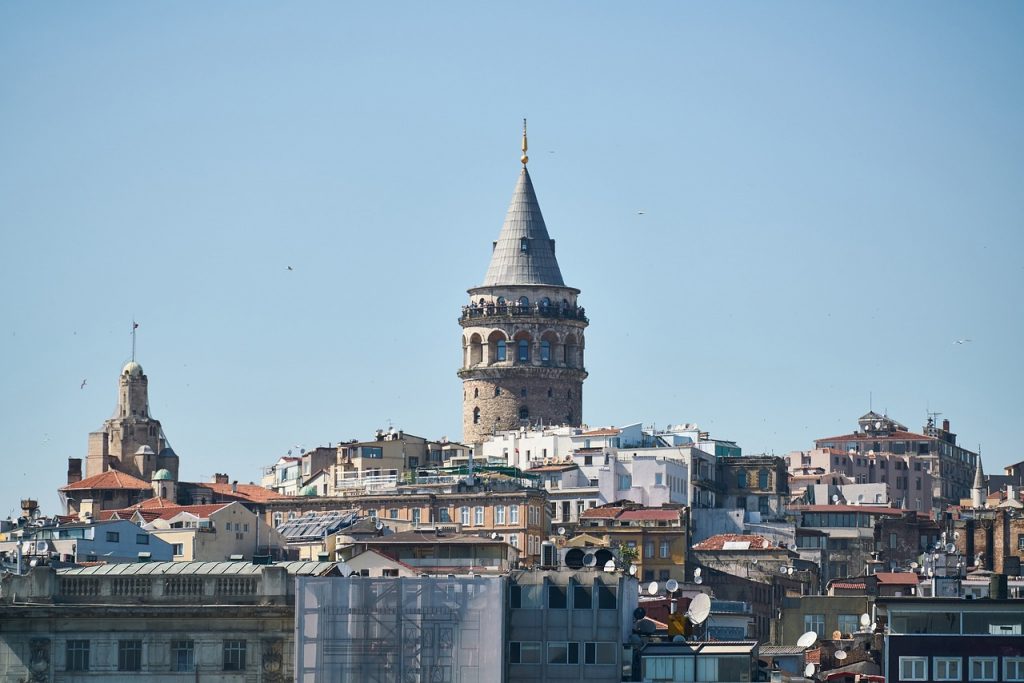
Bustling Metropolis of Istanbul
Your first week in Turkey kicks off in the big city buzz of Istanbul. Imagine a place that’s always moving, with so many people and so many stories. Right there, in the middle of all the action, is a really cool museum created by a famous writer named Orhan Pamuk. It’s called the Museum of Innocence and it’s like walking into a storybook. Each thing you see there has its own special story, just like in his book.
When the sun starts to dip and the city lights begin to twinkle, it’s time to grab a bite of something super tasty. Treat yourself to İskender kebap. It’s a yummy dish with grilled lamb, almost like the steak you love, but with a twist. They put it on top of soft bread, cover it in tomato sauce, melt butter all over it, and add a scoop of yogurt. It’s got lots of layers, kind of like the stories that Pamuk writes, and it’s a favorite for many people in Turkey. It’s the perfect end to a day of adventure and stories in Istanbul!
Ankara: The Hidden Heartbeat of Türkiye
Far from the glamour of the Aegean coast, far from the ancient wonders that dot Istanbul, Ankara represents the capital of Türkiye—a place where the essence of a modern republic coexists with the echoes of a very distant past. Outwardly, Ankara is a city of discreet diplomacy and ministerial offices, while to the ones who would seek to reveal it, it’s going to disclose itself as a vibrant city of culture, a cradle of Anatolian heritage, and a town where old traditions meet with modern aspirations. Ankara is the heart of Türkiye: stable, consistent, and vibrating with hidden beauty.

Literary Adventure Of Turkey
The Mausoleum of a Nation: Anıtkabir
No visit to Ankara is complete without paying homage to the monumental Anıtkabir, the mausoleum of Mustafa Kemal Atatürk, the founder of modern Türkiye. Perched on a hill overlooking the city, Anıtkabir is both a memorial and a symbol of national unity, drawing visitors from across the country. The massive stone colonnades lead to a solemn courtyard where the silence feels reverent, as though the marble itself remembers the hopes and struggles that shaped the Turkish Republic.
Inside the mausoleum, Atatürk’s personal belongings, letters, and historical memorabilia offer glimpses into the mind of a visionary. As you walk along the Lion Road, flanked by symbolic statues of strength and wisdom, Ankara’s crisp breeze seems to whisper stories of revolution, change, and progress. Anıtkabir is not just a monument—it is a pilgrimage to the soul of a nation.
Citadel of History: Ankara Castle
At the heart of the city stands the Ankara Castle (Ankara Kalesi), a citadel with roots stretching back thousands of years. From Hittites to Byzantines, every civilization that set foot in Ankara left its mark on these ancient walls. The climb to the top offers panoramic views of the sprawling capital, where red-tiled rooftops and modern skyscrapers meet in a striking contrast. As you wander through the winding, cobbled streets within the citadel, you’ll pass traditional houses, local craftsmen’s shops, and cozy cafes tucked into corners, each filled with stories of Ankara’s layered past.
Museums of Memory: Treasures from Anatolia
Ankara’s charm lies not only in its history but also in how it preserves the soul of Anatolia. The Museum of Anatolian Civilizations—housed in a restored Ottoman bazaar—offers a profound journey through 8,000 years of history, showcasing treasures from Hittite, Phrygian, and Roman cultures. Bronze statues, ceremonial relics, and intricate jewelry whisper ancient tales of gods and kings, life and death.
For a glimpse into more recent history, visit the Ethnography Museum, which captures the essence of Anatolian culture through vibrant displays of textiles, traditional costumes, and ancient manuscripts. Here, Ankara’s connection to folk traditions and rural life comes alive, reminding visitors that this city is also the keeper of Türkiye’s cultural soul.
Modern Ankara: A City of Progress and Diplomacy
While its ancient heritage forms the backbone of the city, modern Ankara is a thriving metropolis known for its diplomatic presence and academic institutions. Kızılay Square, the city’s bustling hub, is a maze of modern shopping centers, bookshops, and cafes, where students and locals gather over endless cups of tea. Ankara’s art scene is also blossoming, with venues like the CerModern Art Museum showcasing contemporary Turkish artists, and the city’s opera houses staging world-class performances.
Ankara’s quiet sophistication extends to its dining culture, offering more than just street food. Fine dining restaurants celebrate Anatolian flavours with a modern twist, while the aroma of simit (sesame-crusted bread) and Turkish coffee drifts from small cafes hidden down quiet streets.
Flavours of the Anatolian Plateau
The cuisine of Ankara reflects the city’s Anatolian roots. Unlike the seafood-rich menus of coastal cities, Ankara’s culinary tradition is based on grains, meats, and dairy products, reflective of its plateau landscape. Ankara tava—a slow-cooked lamb and rice dish—is a local specialty, often served in traditional family-run restaurants. Another must-try is çubuk turşusu, a famous local pickle made from cucumbers grown in the Çubuk region just outside the city.
Don’t leave Ankara without savouring beypazarı baklava, a local twist on the famous Turkish dessert, known for its light, flaky layers and nutty filling. As the sun dips below the Ankara skyline, find a terrace cafe, order a glass of rakı or Turkish tea, and enjoy the city’s tranquil, unhurried rhythm.
Green Spaces and Modern Vibrancy
Ankara may be a bustling capital, but it’s also a city of parks and quiet retreats. At the heart of the city lies Gençlik Park, an oasis with fountains, walking paths, and small amusement rides, where families come to enjoy the sunshine and students gather over cups of tea. Nearby, Kuğulu Park, with its signature swans gliding over still waters, offers a peaceful place to pause amidst the city’s rhythm.
For a more scenic view, take a stroll along Atatürk Forest Farm and Zoo, where you can sip the locally produced milk and try Ankara’s beloved ice cream. These green spaces serve as the city’s lungs, balancing the steady hum of urban life with moments of peace and reflection.

A Culinary Journey through Ankara’s Streets
Ankara’s culinary offerings reflect its Anatolian roots—simple, hearty, and deeply satisfying. Begin your gastronomic adventure with Ankara tava, a flavorful dish of lamb cooked with rice, rich with the essence of slow-cooked spices. No visit would be complete without savouring the simit, a sesame-crusted bread sold at nearly every street corner—best enjoyed with strong Turkish tea as you walk through the city’s neighbourhoods.
In Kızılay, the city’s bustling commercial heart, modern cafes rub shoulders with traditional eateries serving kebabs and mantı (Turkish dumplings). For dessert, treat yourself to baklava or the regional favorite, höşmerim, a warm, sweet dish made from semolina and cheese. The food in Ankara, like the city itself, offers comfort and a sense of home.
Nightlife and Arts: Ankara After Dark
Ankara is not just a city of government offices and history books—it also has a thriving cultural scene. The city comes alive at night with theatre performances, jazz concerts, and live music. In Tunali Hilmi Street and the surrounding areas, trendy bars, coffee houses, and rooftop lounges offer locals and visitors a taste of Ankara’s urban vibrancy.
The city also boasts several prestigious theatres and art galleries, such as the State Opera and Ballet and the CerModern, where contemporary art exhibitions unfold against the backdrop of Ankara’s old train station. Ankara’s nightlife and artistic pulse show that this is not just a place of tradition but also a city that embraces creativity and change.
A City that Stands Still and Moves Forward
Ankara might not possess the grandeur of Istanbul’s Bosphorus or the fairy-tale landscapes of Cappadocia, but it holds its own quiet beauty, one that rewards those who take the time to look beyond the surface. It is a city where the rhythms of history and modernity coexist in harmony—where ancient citadels stand alongside embassies and cultural centers, and where Rumi’s timeless words resonate even in bustling government buildings.
To explore Ankara is to experience the heartbeat of Türkiye itself—steady, resilient, and full of life. It is a city that offers subtle surprises and deep connections, welcoming those who seek meaning, not just moments. Whether you’re walking through the grandeur of Anıtkabir, savoring the simple joy of tea and simit, or marveling at the art and history tucked into every corner, Ankara leaves its mark—a quiet but unforgettable echo of the country it represents.
In Ankara, you don’t just visit; you become a part of the city’s unfolding story. And when you leave, you carry a piece of it with you—a memory of a place where tradition meets progress, and where the soul of Türkiye lives and breathes.
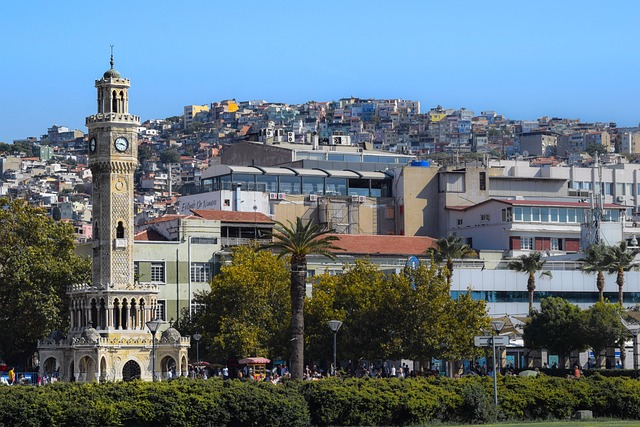
Izmir: A City of Echoes
Something is enchanting about Izmir, a city that seems to hum with the memories of ancient civilizations and the energy of modern life. Known as Smyrna in antiquity, this vibrant city along the Aegean coast has seen everything—from Homer’s birthplace to bustling Ottoman bazaars and today’s lively promenades. To wander Izmir is to walk in the footsteps of storytellers, poets, traders, and dreamers, each leaving their mark on the city, like waves imprinting patterns on the shore. Every street, every breeze, carries an echo of stories that are both ancient and brand new.
Arkas Art Center: A Glimpse into the City’s Creative Soul
Tucked within the heart of Izmir, the Arkas Art Center is more than just an art gallery—it’s a window into the artistic spirit that defines this part of the world. Housed in a beautifully restored 19th-century mansion in the Alsancak district, the building itself feels like an exhibit—its architecture a blend of European elegance and Ottoman grace. Stepping inside, you’ll discover rotating exhibitions of classical, contemporary, and international art, all curated with a deep sense of passion for beauty and creativity.
This is the kind of place where art becomes storytelling. You might find yourself admiring an intricate oil painting one moment, and in the next, getting lost in the soulful strokes of a modern installation. It’s a space that invites contemplation—and maybe even a little daydreaming—about the artists who once stood before these canvases, searching for a way to turn their thoughts into colors and shapes. As you move from room to room, you can almost hear the whispers of creative minds, as though the building itself remembers every brushstroke.
Kumru: A Sandwich with Soul
After immersing yourself in art, it’s time to indulge in one of Izmir’s most beloved culinary traditions: the kumru sandwich. But let’s be clear—this isn’t your average snack. It’s a humble creation that, like Izmir itself, is simple yet unexpectedly full of personality. The word kumru means “dove” in Turkish, and the sandwich is named for the way its bun, toasted to perfection, is said to resemble the shape of a dove’s breast. (Whether it actually does or not is up for debate, but who’s complaining when something tastes this good?)
Inside the slightly crunchy, warm bun, you’ll find a hearty combination of grilled sucuk (Turkish sausage), slices of salty cheese, tomatoes, and sometimes green peppers, all coming together in perfect harmony. Each bite is a little salty, a little smoky, and satisfying—the kind of sandwich that feels like a warm hug from an old friend. There’s an art to eating kumru, too. It’s best enjoyed sitting by the sea, where the gentle breeze carries the scent of salt and jasmine, and the chatter of seagulls provides the soundtrack.
A City of Contrasts and Connections
Izmir is a city that wears its contrasts gracefully. Stroll along Kordonboyu, the waterfront promenade, and you’ll pass chic cafes and trendy restaurants nestled beside historic buildings that have stood the test of time. Here, the modern pulse of the city beats alongside the timeless rhythm of the Aegean Sea. The people of Izmir, known for their laid-back charm, seem to embody this perfect balance. They’ll greet you with a smile and maybe even pull you into a conversation about politics, football, or philosophy—because in Izmir, conversations are as essential as morning coffee.
If you’re lucky, you might stumble upon a traditional folk dance performance in the streets or catch the scent of roasting chestnuts in the winter air. Izmir’s charm lies not in grand monuments or extravagant sights but in its atmosphere, which is both familiar and surprising, like a city you’ve never been to but somehow feel at home in.
A Place for Dreamers and Storytellers
To visit Izmir is to experience a city that embraces both history and modernity, art and simplicity, tradition and innovation. Whether you’re admiring the artistic treasures at Arkas Art Center, savouring every bite of your kumru sandwich, or simply strolling along the lively waterfront, you’ll find that Izmir invites you to slow down and listen. Listen to the stories it has collected over thousands of years, to the waves lapping at the shore, and to the echoes of those who came before you—dreamers, poets, travellers, and artists, all leaving their mark on this timeless place.
Izmir isn’t just a stop on a travel itinerary; it’s a feeling—a city that lingers in your heart long after you leave. And just like a well-spun yarn, it’s a place whose story grows richer every time it’s told.
Bodrum Paradise of Beaches and History
Here is the humanized version of the text you provided:
Bodrum is nestled along the turquoise coast of Türkiye and is a flamboyant tapestry woven from ancient ruins, sun-drenched beaches, and bustling bazaars. In times of yore, this little city on the Aegean was known by the name of Halicarnassus, which has grown from a humble fishing village into an international city of culture, luxury, and memories while retaining its Mediterranean quaintness. Be it a history enthusiast, a lover of beaches, or even an adventurous soul, Bodrum has something to offer to all—a haven of repose and tales.
A Journey through History: Halicarnassus and Legends of Yore
The historical charm of Bodrum rises with the Mausoleum of Halicarnassus, one of the Seven Wonders of the Ancient World. Though it remains in fragments until today, it yet speaks of ancient glory. Constructed in 350 BCE as a tomb for King Mausolus, it gave birth to the term “mausoleum” and sealed Bodrum’s place in world heritage.
Further into the ancient past of Bodrum, one has to visit the Bodrum Castle, also known as the Castle of St. Peter. Looking over this glittering bay is the medieval fortress built by the Knights of St. John in the 15th century. Inside these walls is the Museum of Underwater Archaeology, where many relics from shipwrecks and the routes of ancient trade are kept. The carved-into-the-hillside ancient Theatre of Halicarnassus, with its panorama views of the coastline of Bodrum, invites the visitor to dream of worlds of gladiators and great performances.
Bodrum’s Beaches: Sun, Sand, and Sapphire Waters
Beyond history, Bodrum beckons visitors with some of the most stunning beaches in Türkiye. From bustling seaside lounges to hidden coves, every stretch of sand holds a new experience.
- Bitez Beach offers a peaceful retreat, ideal for windsurfing and savouring the local yogurt-based dish, çılbır, at waterfront cafes.
- Gümüşlük—a charming fishing village—boasts tranquil waters and ruins submerged beneath the sea. You can walk along a sunken ancient path known as the “Rabbit Island Walk”, crossing from shore to shore with fish swimming alongside your feet.
- Yalıkavak Beach, with its swanky marina and upscale boutiques, caters to travellers seeking a luxury escape, while Camel Beach provides a fun, family-friendly experience with soft sand, beachside restaurants, and even camel rides.
For those with an adventurous streak, a private boat tour to explore the secret coves of Orak Island or Karaada (Black Island) is the perfect way to experience Bodrum’s azure waters at their most serene.

Ephesus Packed With Ruins of History
As you step into the second week of your Literary Adventure in Turkey, prepare to be greeted by the timeless echoes of Ephesus. This ancient city, once a bustling metropolis of the classical world, stands now in serene ruin, whispering tales of ages past to those who walk its storied streets. Every column, every stone pathway, and the crumbling facade is like a bookmark in the pages of history, inviting you to read between the lines of the lives that once thrived here.
Amid these hallowed ruins, the experience is made all the more authentic with the taste of traditional Gözleme. This simple yet satisfying dish, with its hand-rolled dough, crisped to golden perfection and stuffed with an array of savoury fillings like seasoned spinach, tangy feta, or spiced meats, offers a comforting counterpoint to the grandeur of antiquity around you. As you bite into the warm, flaky layers, you’re not just nourishing your body but grounding yourself in the vibrant tapestry of Turkish culture that is still alive and well today. It’s a perfect moment of reflection on your Literary Adventure in Turkey, where every bite and every sight forms a narrative of a land steeped in history and rich in flavour.
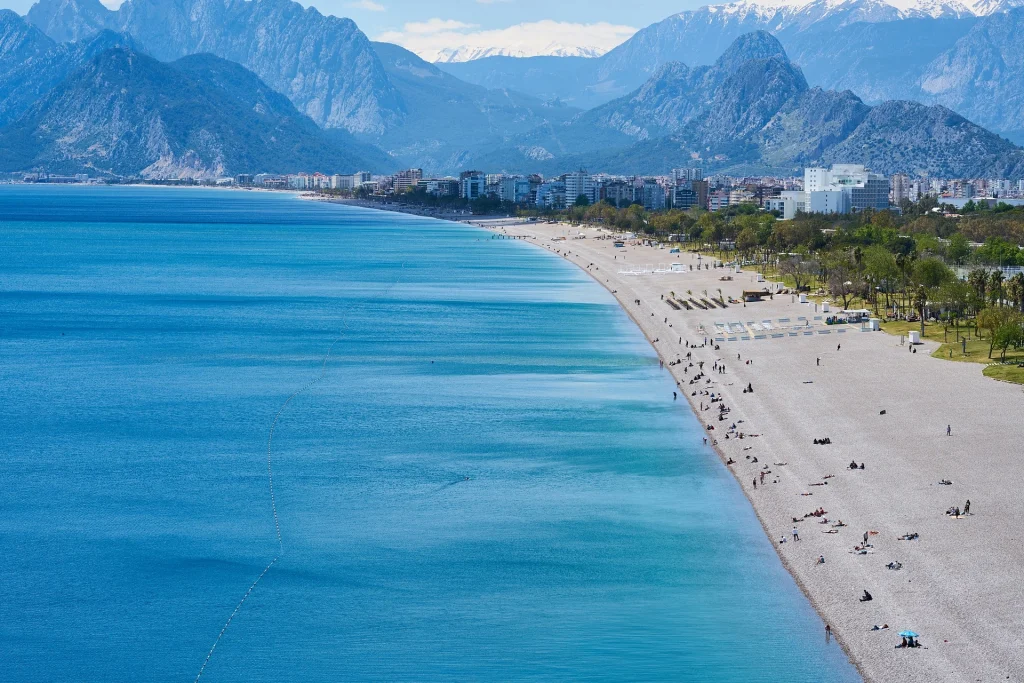
Antalya: The Sunny Pathway of Europe
Imagine stepping into a treasure trove of ancient stories—that’s the feeling you get when you visit the Antalya Museum, one of Türkiye’s most renowned archaeological museums. Nestled in the heart of Antalya, a coastal city where the Mediterranean Sea sparkles under the sun and the Taurus Mountains stand sentinel, this museum offers a glimpse into the ancient civilizations that once flourished in the region. Antalya is a place where time flows effortlessly between the past and present, blending myths, legends, and historical artifacts into a captivating narrative.
A Time Machine of Treasures: Antalya Museum
The Antalya Museum is more than just a collection of relics; it is a portal to antiquity. Housing artifacts from the Paleolithic era to the Ottoman period, the museum showcases treasures that were uncovered in ancient cities such as Perge, Aspendos, Side, and Phaselis. Some of these cities were bustling hubs of the Roman and Hellenistic eras, and their ruins remain scattered across the Antalya region, still waiting to be explored.
Among the museum’s highlights is a remarkable collection of Roman sculptures, including larger-than-life statues of emperors, gods, and goddesses, and an exquisite display of sarcophagi, each adorned with intricate carvings depicting mythical scenes. Visitors can also marvel at coins, jewelry, mosaics, and household items, offering a glimpse into the everyday lives of people who lived in the region centuries ago. Walking through the museum is like unfolding a scroll of history, filled with stories of power, trade, conquest, and cultural exchange.
Some of the artifacts are so astonishing that they’ve sparked legends and myths, inspiring stories of ancient kings, adventurers, and forgotten gods. Each exhibit adds a layer to the cultural richness of Antalya—a city that stands at the crossroads of Europe and Asia, bridging worlds, cultures, and eras.
A Culinary Delight: Piyaz – A Salad with a Story
After wandering through the halls of history, you’ll likely feel a little hungry, and Antalya has just the dish to satisfy both your hunger and your curiosity: Piyaz. But this isn’t your ordinary salad. Antalya’s version of Piyaz is unique, made with white beans, onions, parsley, tomatoes, and topped with a rich dressing of tahini—a creamy paste made from ground sesame seeds.
This dish has its own legacy, rooted in local tradition. Unlike the lighter versions of Piyaz found elsewhere in Türkiye, Antalya’s Piyaz stands out for its bold use of tahini, which gives the dish a smooth, nutty flavor. The combination may sound unexpected at first, but the result is a delicious harmony of textures and flavors. Locals take great pride in this dish, considering it not just food but a culinary emblem of the region. Pair it with a side of grilled meat or köfte (Turkish meatballs) for a meal that’s as satisfying as Antalya’s cultural and historical offerings.
Antalya: A City Where History, Nature, and Flavor Collide
Beyond the museum and culinary delights, Antalya itself is a destination of endless discovery. The Old Town (Kaleiçi), with its narrow cobblestone streets and Ottoman-era houses, feels like a journey through time. Stroll along the harbor where fishermen still ply their trade, or visit Hadrian’s Gate, an ancient triumphal arch built in honor of the Roman emperor’s visit to the city. Antalya’s coastline, known as the Turkish Riviera, offers crystal-clear waters and sun-soaked beaches, perfect for relaxation after days of exploring.
The region’s natural beauty is equally mesmerizing. Just outside the city, you can hike through the Taurus Mountains, visit the Düden Waterfalls, or explore Olympos and the Chimera, where an eternal flame flickers from the mountainside—a phenomenon tied to ancient myths.
A Perfect Blend of Past and Present
Antalya is not just a city of ruins and relics; it is a vibrant, living place where the past and present coexist seamlessly. Whether you’re delving into the depths of history at the museum, enjoying a dish that’s as flavorful as it is traditional, or simply soaking up the sunshine along the Mediterranean coast, Antalya leaves visitors with memories as vivid as its landscapes.
Every corner of the city tells a story, every meal offers a taste of the region’s heritage, and every experience reflects the essence of Anatolia’s diverse past. Antalya invites you to explore, taste, and connect—not just with the city, but with the cultures, myths, and flavours that have shaped it for millennia.
In Antalya, the sunny pathway of Europe, every visit feels like a journey through time, with the warmth of the sun and the richness of history illuminating every step along the way.

Cappadocia Fairy Chimneys
As we continue our journey, the enchanting region of Cappadocia awaits us, with its otherworldly fairy chimneys and sprawling open-air museums. Imagine wandering through a place that seems lifted straight from the pages of a fantasy novel, where nature and history blend to create a backdrop so magical, it stirs the soul. The terrain is dotted with towering formations, carved by time and the elements, standing as natural sculptures that command awe and wonder.
In this dreamlike setting, the culinary delights are as spectacular as the views. The Testi Kebabı, a traditional Anatolian dish, is not just a meal; it’s a performance. Seasoned meat and vegetables are sealed in a clay pot and slow-cooked to perfection, infusing every bite with the deep, earthy flavours of the region. The climax of this culinary experience is the dramatic presentation— the pot is cracked open, often at your table, releasing a cloud of aromatic steam and revealing the succulent feast within. It’s a taste that’s as memorable and striking as Cappadocia’s dramatic vistas, leaving you with a sense of satisfaction that echoes the grandeur of the landscape itself. This is a place and a meal designed not just to be seen and eaten, but to be felt and remembered, a true highlight in the tapestry of Turkish wonders.
Konya The Cultural Hub of Turkiye
In the heart of the Anatolian steppe lies Konya, a city where the spirit of poetry, philosophy, and spirituality dances through the centuries. Known as the cradle of Sufism, Konya is more than just a place—it is a pilgrimage of the soul, a timeless crossroads where tradition and serenity embrace. From its whirling dervishes to its mystical architecture, Konya offers a glimpse into the cultural soul of Türkiye, inviting every traveler to lose themselves in contemplation, history, and beauty.
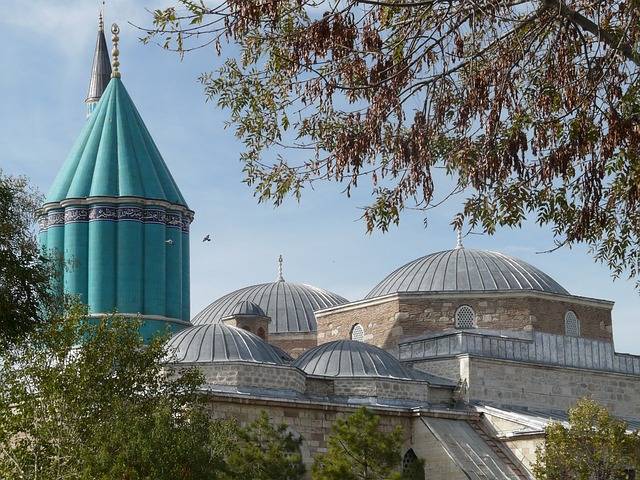
A City Woven in the Mysticism of Rumi
The soul of Konya beats in rhythm with the teachings of Jalal al-Din Rumi, the 13th-century Persian poet and Sufi mystic who sought divine love in all things. His words, “Come, come, whoever you are,” echo through the streets, inviting people from all walks of life to seek enlightenment within the city’s borders. The Mevlana Museum, once Rumi’s resting place and lodge, now stands as a beacon for those in search of spiritual meaning.
Within its turquoise-tiled dome lies the poet’s tomb, adorned with Arabic calligraphy that flows like his verses. The museum’s halls are filled with artifacts of Sufi culture—ancient manuscripts, musical instruments, and ceremonial robes—each item radiating a sense of devotion. Visitors can witness the transcendental essence of the Whirling Dervish ceremonies (Sema), where men in flowing white robes spin to the sound of flutes and drums, becoming living embodiments of cosmic unity.
A Tapestry of Architecture and Spirituality
Konya’s architectural splendour reflects the Seljuk dynasty, which once made the city its capital. The Alaeddin Mosque, standing on a hilltop, tells a story of faith that stretches back nearly 1,000 years. Its stone arches and simple elegance create a sense of solemnity, while the intricately decorated carved wooden mihrab whispers of devotion passed down through centuries.
Further along the city’s streets lies Karatay Medrese, an ancient theological school now turned into a museum. Inside, ceramic tiles in shades of cobalt blue and turquoise sparkle in dim light, capturing the essence of Konya’s artistic brilliance. Each tile bears intricate floral patterns—delicate yet eternal, like the teachings rooted within the city’s foundations.
Konya’s Living Heritage: From Tradition to Modernity
Despite being steeped in the traditions of the past, Konya is not a city locked in time. It hums with life and energy, balancing modern aspirations with ancient heritage. The city’s bazaars brim with activity, filled with stalls offering handwoven kilims, ornate copperware, and the scent of freshly brewed Turkish tea.
The cultural landscape also extends beyond religion and history, with the Konya Science Center attracting families and scholars alike. Art lovers can explore contemporary galleries, while the annual International Mystic Music Festival invites performers from around the world, transforming the city into a global stage of artistic expression.
The Culinary Soul of Konya
A journey through Konya would not be complete without savouring its culinary treasures. The region’s signature dish, etli ekmek—a long, thin flatbread topped with finely minced meat—carries the comforting warmth of Konya’s hearths. Each bite speaks of ancient culinary traditions, lovingly preserved in local kitchens.
For something more indulgent, fırın kebabı—slow-cooked lamb—melts in the mouth, a testament to the city’s mastery of flavors. Tirit, a traditional dish made with lamb, bread, and yogurt, offers a soul-satisfying experience that mirrors the hospitality of Konya’s people. A sip of Turkish tea or ayran (yogurt-based drink) completes the meal, grounding visitors in the simple yet profound pleasures of Anatolian life.
The Spirit of Konya: Where Every Street is a Poem
To wander through Konya’s streets is to walk within a poem—a living ode to faith, love, and discovery. Here, the cobblestones hum with stories, the breeze carries whispers of ancient travelers, and the sound of prayer echoes gently from towering minarets.
Time seems to slow in Konya, urging travelers to pause, breathe, and reflect. Whether you watch the sunset over Alaeddin Hill or trace the elegant arches of an ancient medrese, each moment feels imbued with a quiet reverence. In Konya, even the most ordinary moments invite reflection, as if the city itself is a gateway to inner peace.
Conclusion
This trip is so much more than just a series of stops – it’s a real adventure through time. Picture it as a journey that tickles all your senses and pays respect to the storytelling legends of Turkey. Let yourself really savor the journey. Take in the sights, the sounds, and the tastes, and let them be the souvenirs that you take back home. Every story you hear, every new flavor you try is a little piece of Turkey to hold onto. So, go ahead and enjoy every moment – from the bustling city corners to the tranquil countryside, from the ancient tales to the fresh, aromatic scent of Turkish tea. Carry these experiences with you, like the best kind of travel keepsakes that only get better with time.




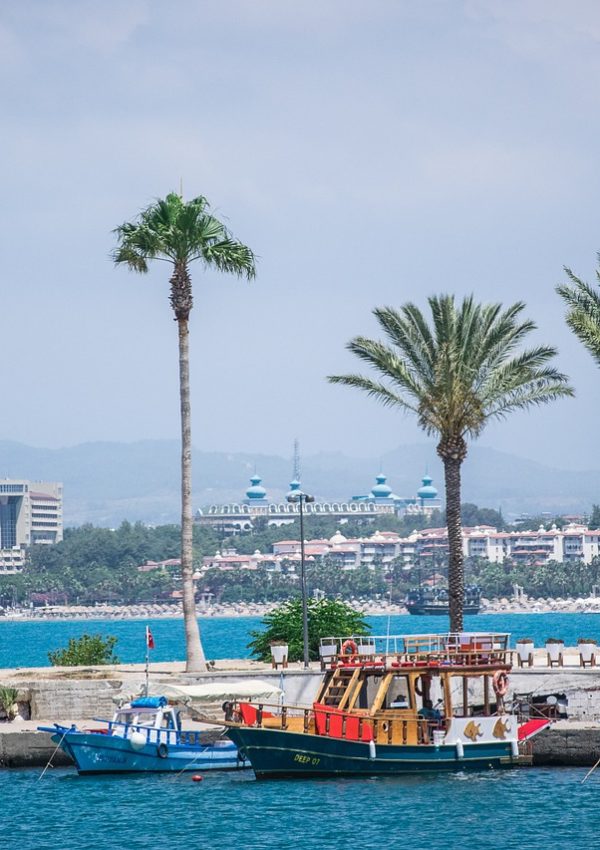


Leave a Reply